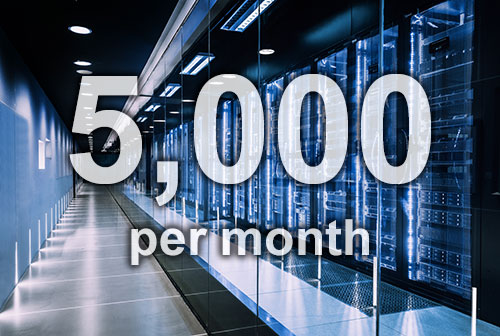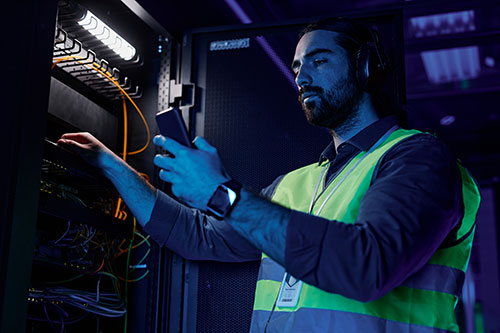Generative AI is already used by two-thirds of organizations. Public-cloud spending levels are forecast to rise 20% next year. Technical debt is a challenge for nearly 75% of organizations. And info-security violations by staff are nearly as common as attacks by external hackers.
That’s some of the latest research from leading IT market watchers and analysts. And here’s your Performance Intensive Computing roundup.
GenAI already used by 2/3 of orgs
You already know that Generative AI is hot, but did you also realize that over two-thirds of organizations are already using it?
In a survey of over 2,800 tech professionals, publisher O’Reilly found that fully 67% of respondents say their organizations currently use GenAI. Of this group, about 1 in 3 also say their organizations have been working with AI for less than a year.
Respondents to the survey were users of O’Reilly products worldwide. About a third of respondents (34%) work in the software industry; 14% in financial services; 11% in hardware; and the rest in industries that include telecom, public sector/government, healthcare and education. By region, nearly three-quarters of respondents (74%) are based in either North America or Europe.
Other key findings from the O’Reilly survey (multiple replies were permitted):
- GenAI’s top use cases: Programming (77%); data analysis (70%); customer-facing applications (65%)
- GenAI’s top use constraints: Lack of appropriate use cases (53%); legal issues, risk and compliance (38%)
- GenAI’s top risks: Unexpected outcomes (49%); security vulnerabilities (48%); safety and reliability (46%)
Public-cloud spending to rise 20% next year
Total worldwide spending by end users on the public cloud will rise 20% between this year and next, predicts Gartner. This year, the market watcher adds, user spending on the public cloud will total $563.6 billion. Next year, this spend will rise to $678.8 billion.
“Cloud has become essentially indispensable,” says Gartner analyst Sid Nag.
Gartner predicts that all segments of the public-cloud market will grow in 2024. But it also says 2 segments will grow especially fast next year: Infrastructure as a Service (IaaS), predicted to grow nearly 27%; and Platform as a Service (PaaS), forecast to grow nearly 22.
What’s driving all this growth? One factor: industry cloud platforms. These combine Software as a Service (SaaS), PaaS and IaaS into product offerings aimed at specific industries.
For example, enterprise software vendor SAP offers industry clouds for banking, manufacturing, HR and more. The company says its life-sciences cloud helped Boston Scientific, a manufacturer of medical devices, reduce inventory and order-management operational workloads by as much as 45%.
Gartner expects that by 2027, industry cloud platforms will be used by more than 70% of enterprises, up from just 15% of enterprises in 2022.
Technical debt: a big challenge
Technical debt—older hardware and software that no longer supports an organization’s strategies—is a bigger problem than you might think.
In a recent survey of 523 IT professionals, conducted for IT trade association CompTIA, nearly three-quarters of respondents (74%) said their organizations find tech debt to be a challenge.
An even higher percentage of respondents (78%) say their work is impeded by “cowboy IT,” shadow IT and other tech moves made without the IT department’s involvement. Not incidentally, these are among the main causes of technical debt, mainly because they are not acquired as part of the organization’s strategic goals.
Fortunately, IT pros are also fighting back. Over two-thirds of respondents (68%) said they’ve made erasing technical debt a moderate or high priority.
Cybersecurity: Staff violations nearly as widespread as hacks
Employee violations of organizations’ information-security policies are nearly as common as attacks by external hackers, finds a new survey by security vendor Kaspersky.
The survey reached 1,260 IT and security professionals worldwide. It found that 26% of cyber incidents in business occurred due to employees intentionally violating their organizations’ security protocols. By contrast, hacker attacks accounted for 30%—not much higher.
Here’s the breakdown of those policy violations by employees, according to Kaspersky (multiple replies were permitted):
- 25%: Using weak passwords or failing to change passwords regularly
- 24%: Visiting unsecured websites
- 24%: Using unauthorized systems for sharing data
- 21%: Failing to update system software and applications
- 21%: Accessing data with an unauthorized device
- 20%: Sending data (such as email addresses) to personal systems
- 20%: Intentionally engaging in malicious behavior for personal gain
The issue is far from theoretical. Among respondents to the Kaspersky survey, fully a third (33%) say they’ve suffered 2 or 3 cyber incidents in the last 2 years. And a quarter (25%) say that during the same time period, they’ve been the subject of at least 4 cyberattacks.
Do more:












